How to Fix the ‘The File or Directory is Corrupted and Unreadable’ Error
When you connect a USB flash drive or an external hard drive to your computer, you may encounter a common and frustrating error: ‘the file or directory is corrupted and unreadable.’ This error can prevent you from accessing or moving important files on your storage devices.

In this guide, we will introduce you to the causes of this error and some viable solutions to regain access to your files and data. Try it now and see if the ‘file or directory is corrupted and unreadable’ error persists.
1. Reasons Behind the ‘File or Directory is Corrupted and Unreadable’ Error
Before we explore solutions for addressing the “File or directory is corrupted and unreadable” issue, it’s essential to understand why this problem occurs.
- Disk Errors: Disk errors or bad sectors on your storage device can lead to data corruption and trigger this error.
- Virus or Malware Attack: Viruses and malware can infect and damage files and directories, making them unreadable.
- File System Issues: If there are problems with the file system structure, such as a corrupted Master File Table (MFT) on NTFS drives, it can result in data becoming corrupted and unreadable.
- Faulty Hardware: Hardware issues, like a failing hard drive or malfunctioning USB drive, can cause data to be written or read incorrectly, leading to corruption.
This understanding not only helps us find the right solutions more quickly but also enables us to take preventative measures to avoid similar issues in the future.
2. How to Fix ‘The File or Directory is Corrupted and Unreadable’
There are a few ways to tackle this error. In the following content, we will explain how to first try a quick fix. If that doesn’t work, we will attempt to format the drive (without losing its data). If all else fails, we will resort to using a Windows tool.
Quick Fixes for the ‘File or Directory is Corrupted and Unreadable’ Error
Before delving into advanced troubleshooting methods, let’s begin with some quick fixes:
- Restart Your Computer: Sometimes, a simple reboot can often resolve temporary glitches.
- Disable Antivirus Software: Your antivirus software can block access to an external drive if it suspects a threat. To fix the ‘file is corrupted and unreadable’ error, you can try turning off or uninstalling the firewall and antivirus software.
- Relocate Your Files: If you’re trying to open a file or folder from an external drive and encounter an error, copying the file or folder to your internal drive may help
Format Your Drive without Losing Data
Formatting can quickly resolve the error ‘file is corrupted and unreadable’ by wiping the file system and starting fresh. However, it will also erases all data on the device. If you didn’t have a backup, your files may be gone forever.
Don’t worry! Before formatting, you can backup all files or consider using a professional data recovery tool. We recommend using Tenorshare 4DDiG Data Recovery to get back lost data from inaccessibale drives. This powerful tool is easy to use and allows you to retrieve over than 2000 types of files, including photos, videos, audio, documents, and more from your drive.
Follow these steps to restore your files with ease:
- First, install and open 4DDiG Data Recovery on your computer. On its main screen, you’ll see various partitions, external drives, and folders available. You can pick any drive or even navigate to a specific folder you want to scan. Once you’ve selected the location, just click the “Start” button.
- 4DDiG will start scanning your chosen drive thoroughly to find lost or existing data. As it discovers files, it lists them in the File View. You have the option to pause or stop the process if needed, but it’s usually best to let it finish for better results.
- That’s it! Once the scanning is complete, all the recovered data will appear on the screen. Simply choose the files you want to save and click the “Recover” button.
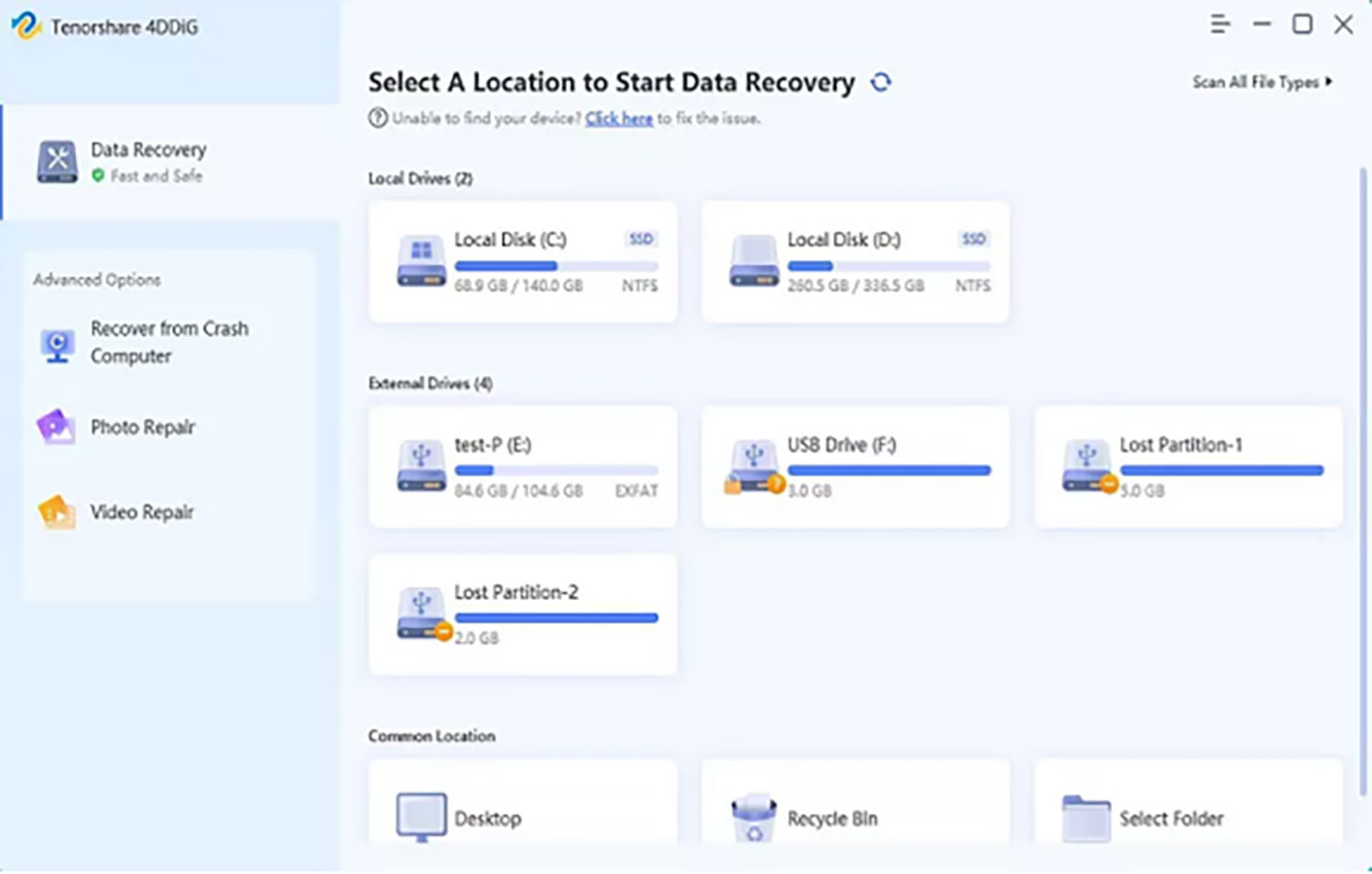

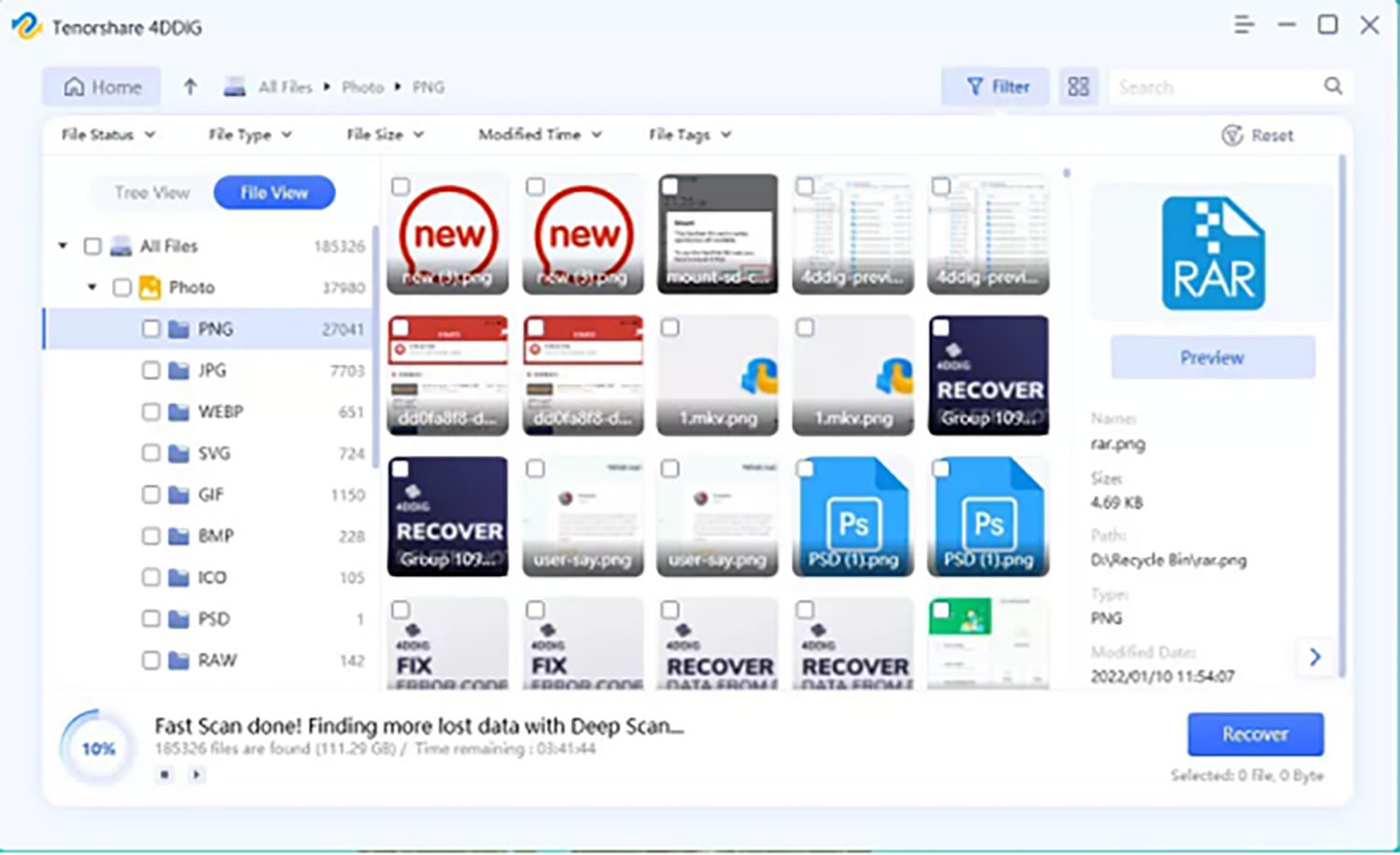
Now, you can fix the error ‘the file or directory is corrupted and unreadable’ without losing any data.
- Press Windows + E on your keyboard to open File Explorer.
- Find the problematic drive and right-click on it. Then, select ‘Format…’ from the context menu.
- In the Format window, you can choose the file system (usually NTFS for Windows drives) and allocation unit size (default is fine for most cases). Then, check the box next to Quick Format.
- Once you’ve configured the options, click the ‘Start’ button.
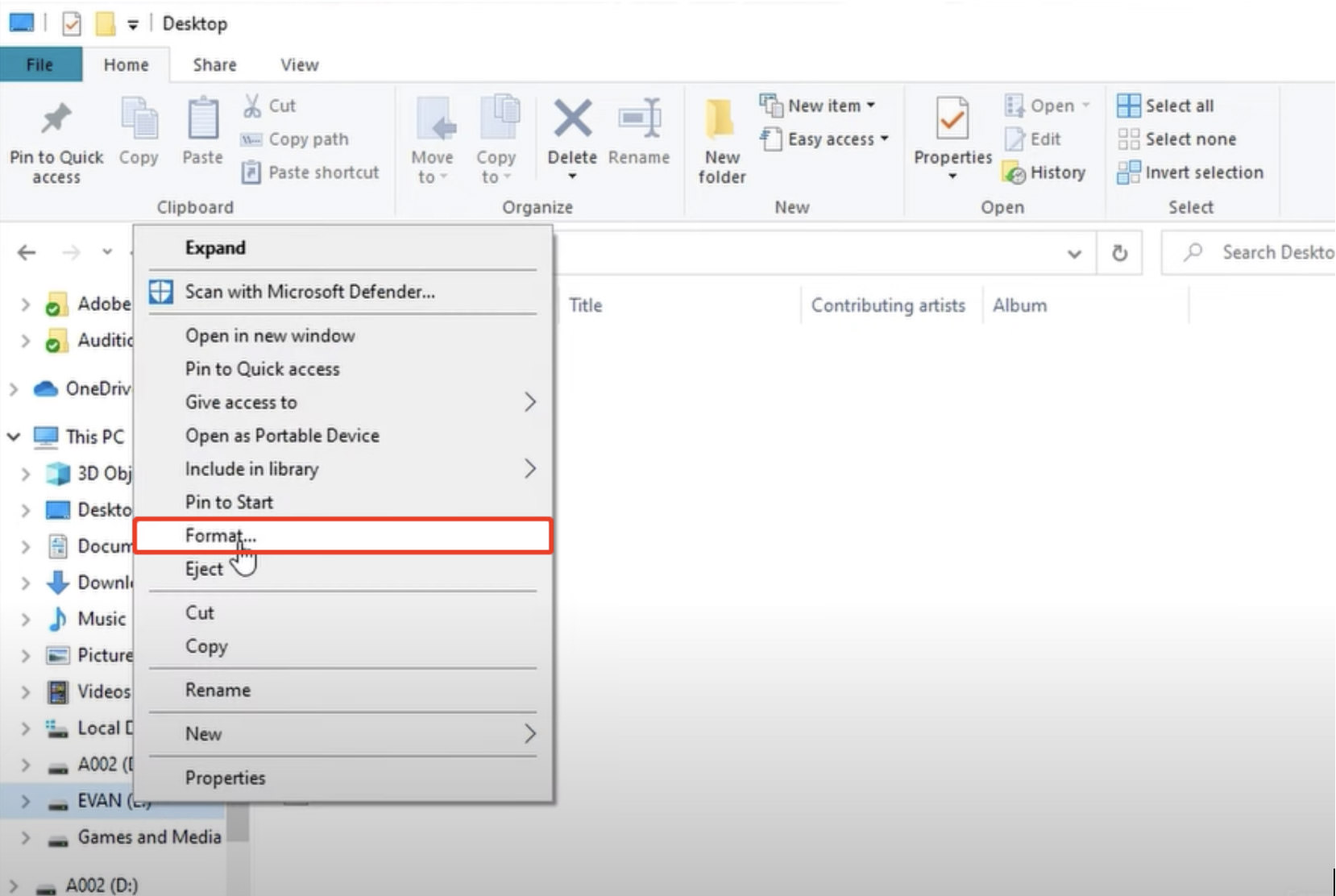
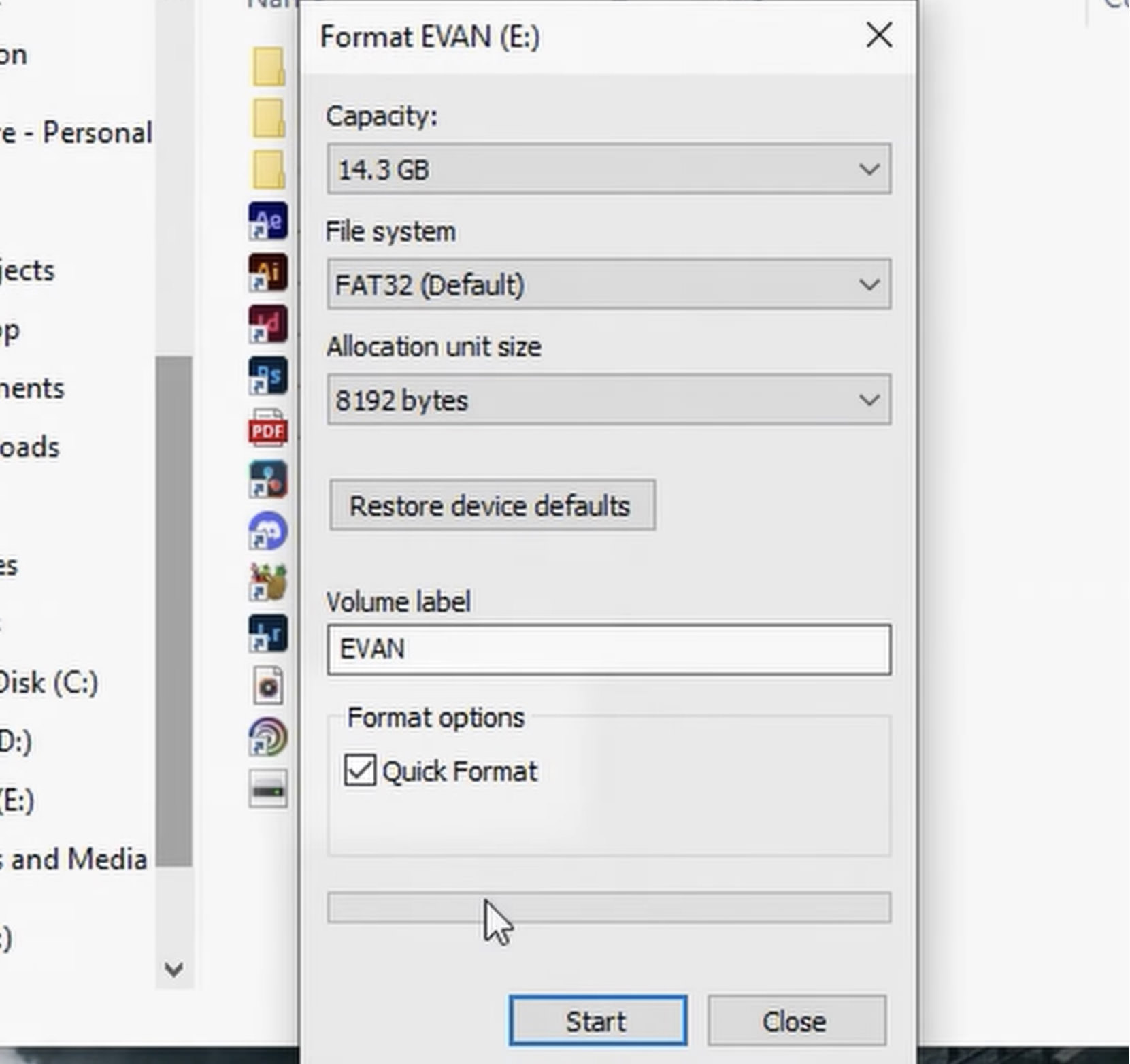
Use Windows’ Command Prompt
As mentioned earlier, file system issues are one of the main culprits behind the error ‘the file or directory is corrupted and unreadable.’ In such cases, the Windows’ Command Prompt tool can come in handy.
- Press Windows + S keys and enter
cmdinto the search bar. Then, select ‘Run as administrator’ to launch it. - Type the following command and hit the Enter key:
chkdsk X: /f(ReplaceXwith the drive letter of the disk you want to check and repair.) - After CHKDSK completes, it will display a summary of the scan results. If it found and repaired any issues, it will be noted in the report.
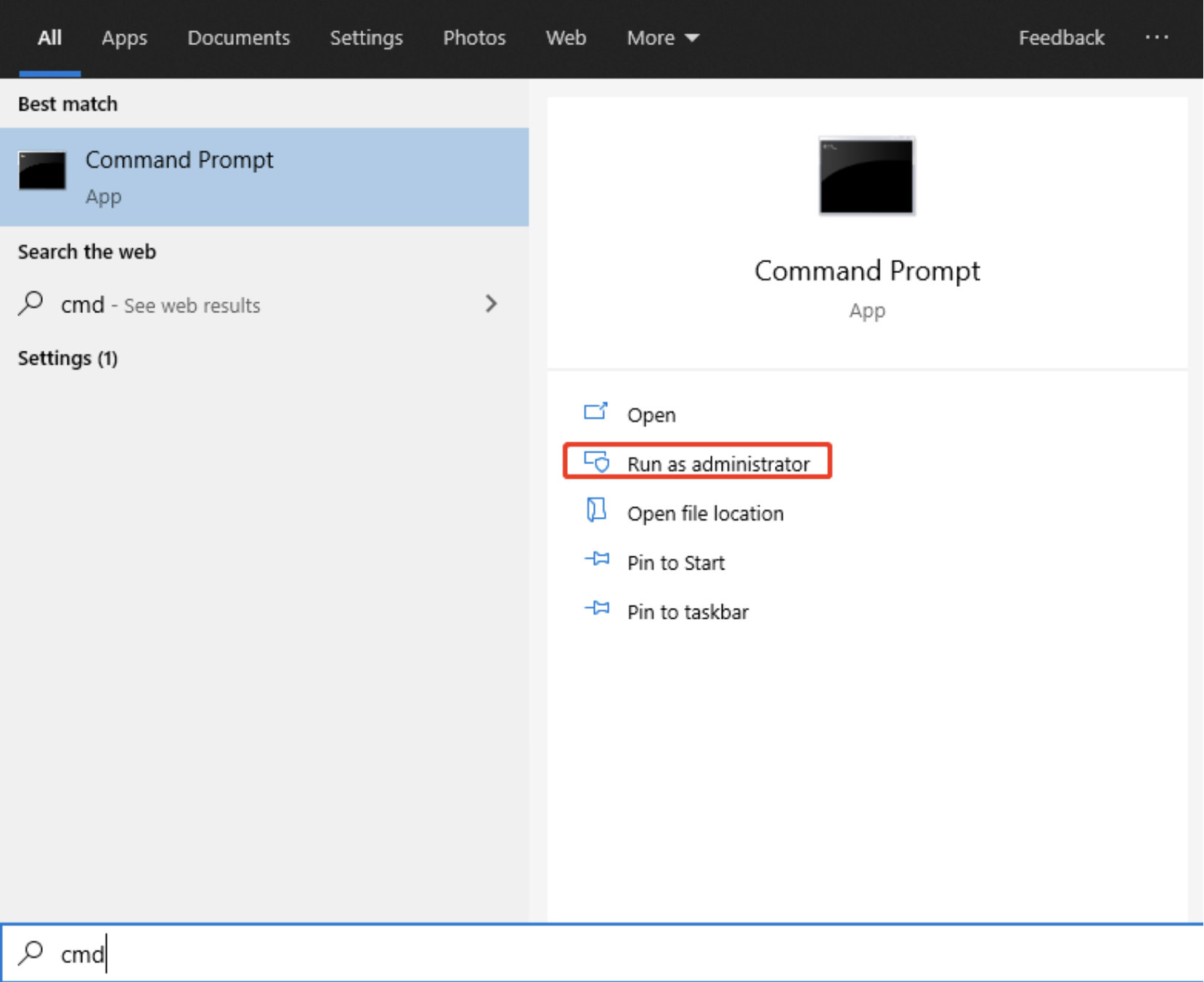

Alternatively, if you are not very familiar with the command line, there is another easy way to check and fix file system errors on your disk.
- Open the File Explorer by pressing Windows + E on your keyboard.
- Navigate to ‘This PC’ or ‘My Computer’ in the left sidebar. Then, right-click on the inaccessible drive and pick ‘Properties.’
- Head to the ‘Tools’ tab at the top. Under the ‘Error checking’ section, click the ‘Check’ button.

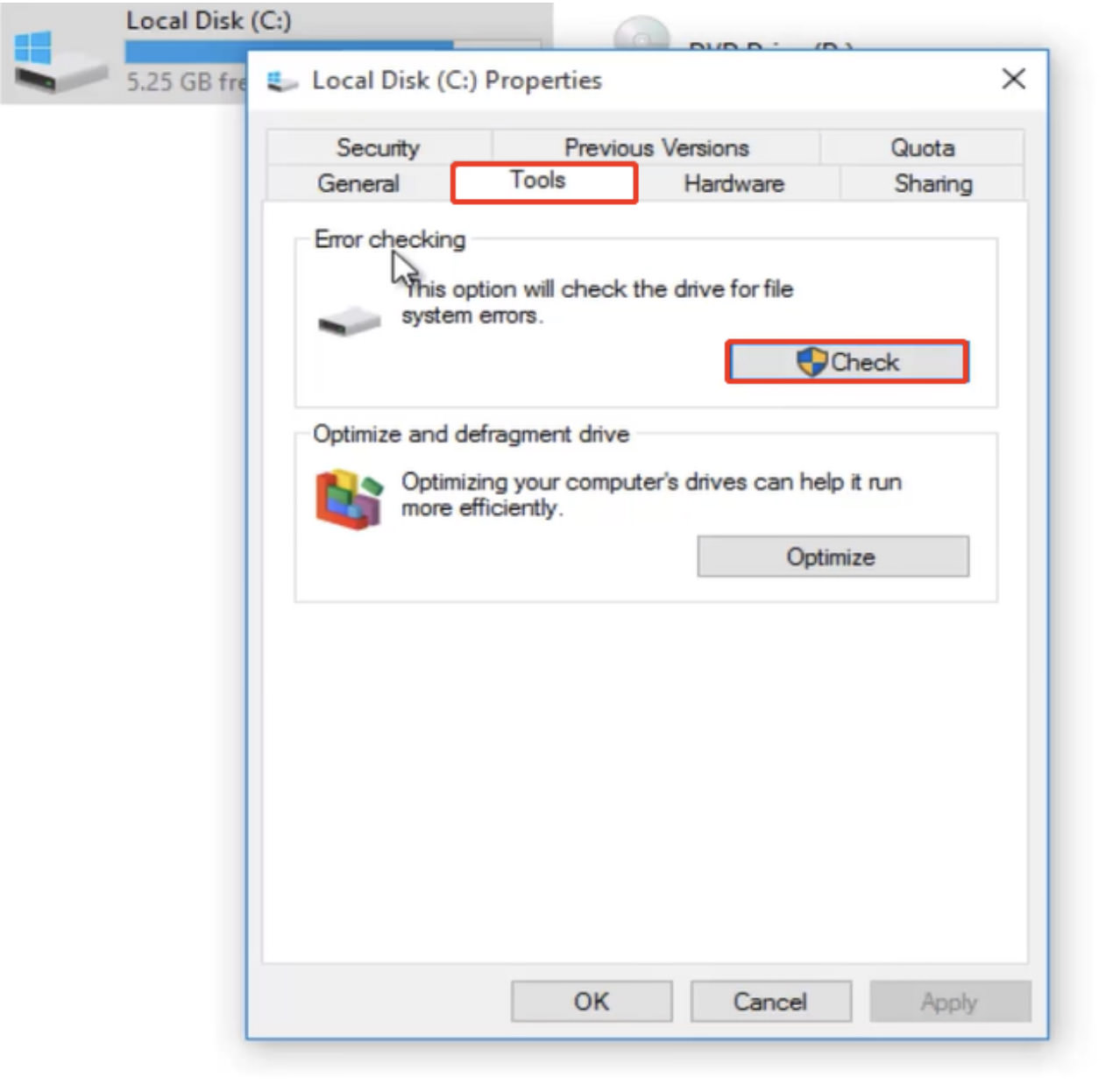
3. What if the ‘File is Corrupted and Unreadable’ Error Occurs on Drive C?
The ‘file or directory is corrupted and unreadable’ error can occur not only when accessing data on external disks but also on your local drive, such as Drive C.
In addition to the methods mentioned above, there are two more ways to address this common Windows error: using Windows Startup Repair and reinstalling the OS itself.
Use Windows Startup Repair
Typically, if Drive C, which is your system drive, becomes corrupted, your computer should cease to function correctly. However, if your computer continues to operate after receiving the error ‘the file or directory is corrupted and unreadable,’ You may need to consider using Windows Startup Repair.
Here is how you do it:
- Press Windows + I on your keyboard and then click on ‘Update & Security.’
- Go to the ‘Recovery’ tab. Next, hit the ‘Restart Now’ button under ‘Advanced Startup.’
- Once your computer restarts in the advanced startup mode, you’ll see some choices. Then, click on the‘Troubleshoot’ option.
- Select ‘Advanced Options.’
- Look for the ‘Startup Repair’ option and click on it. Now, windows will start repairing your system.
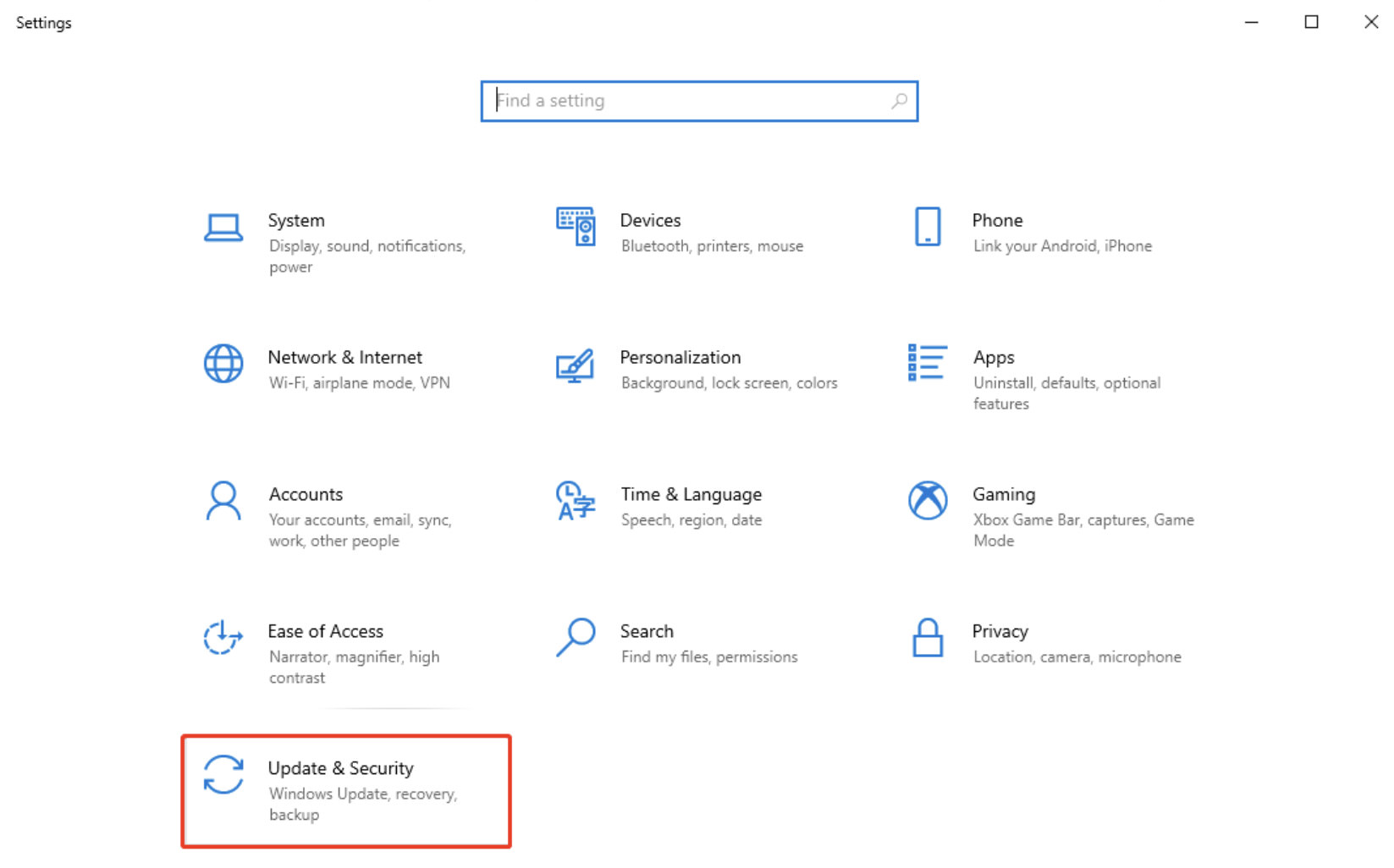
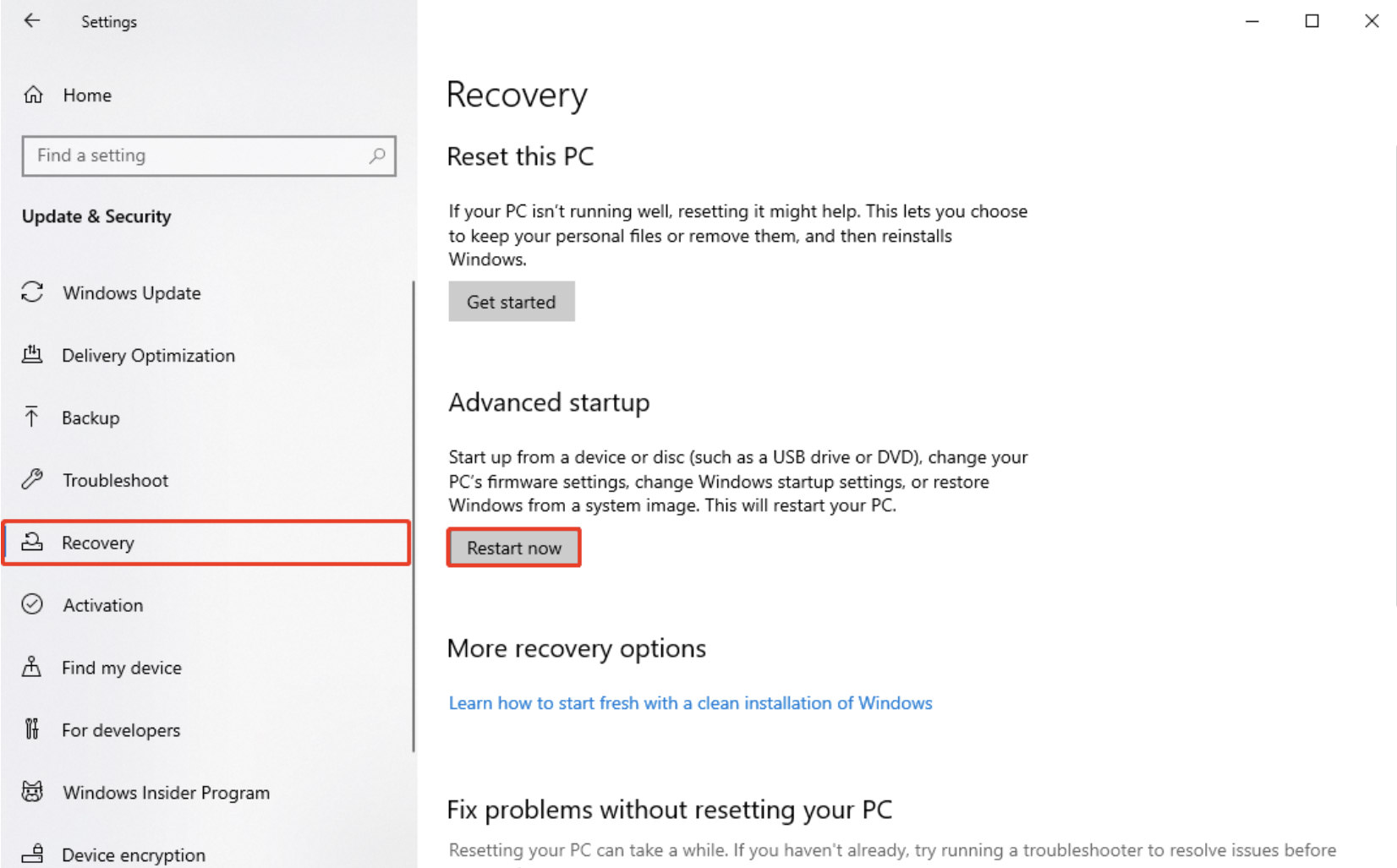
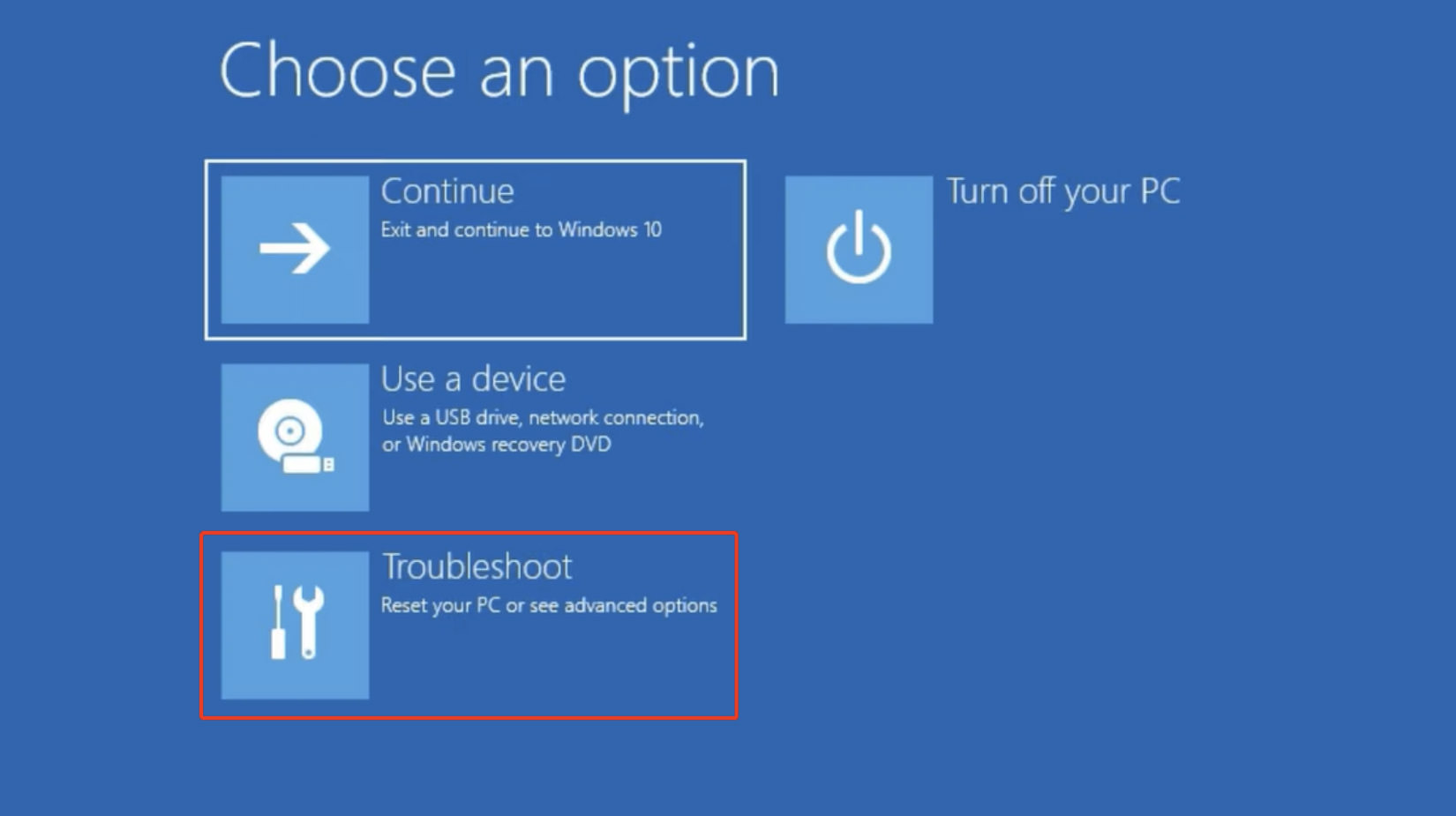
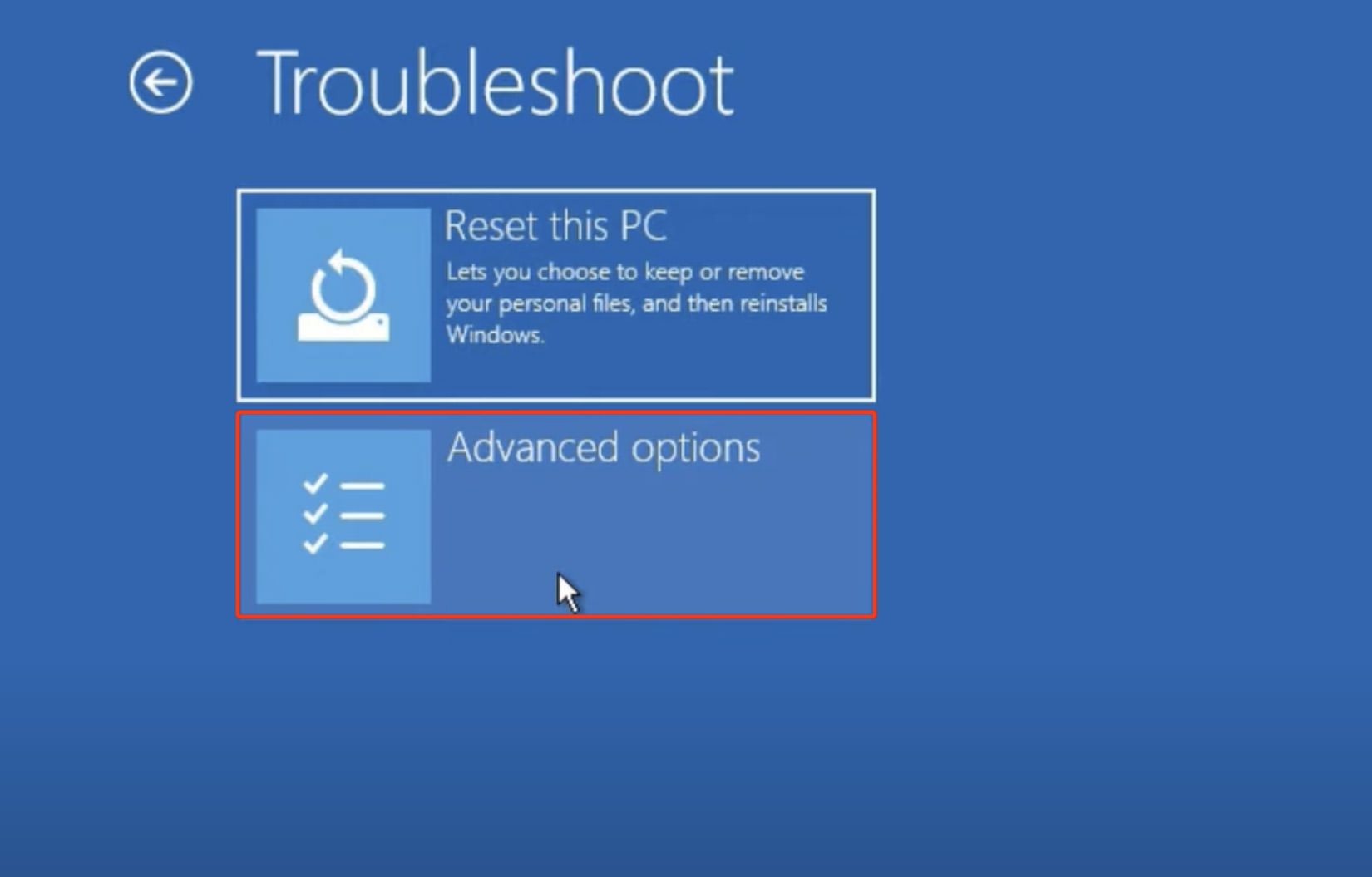
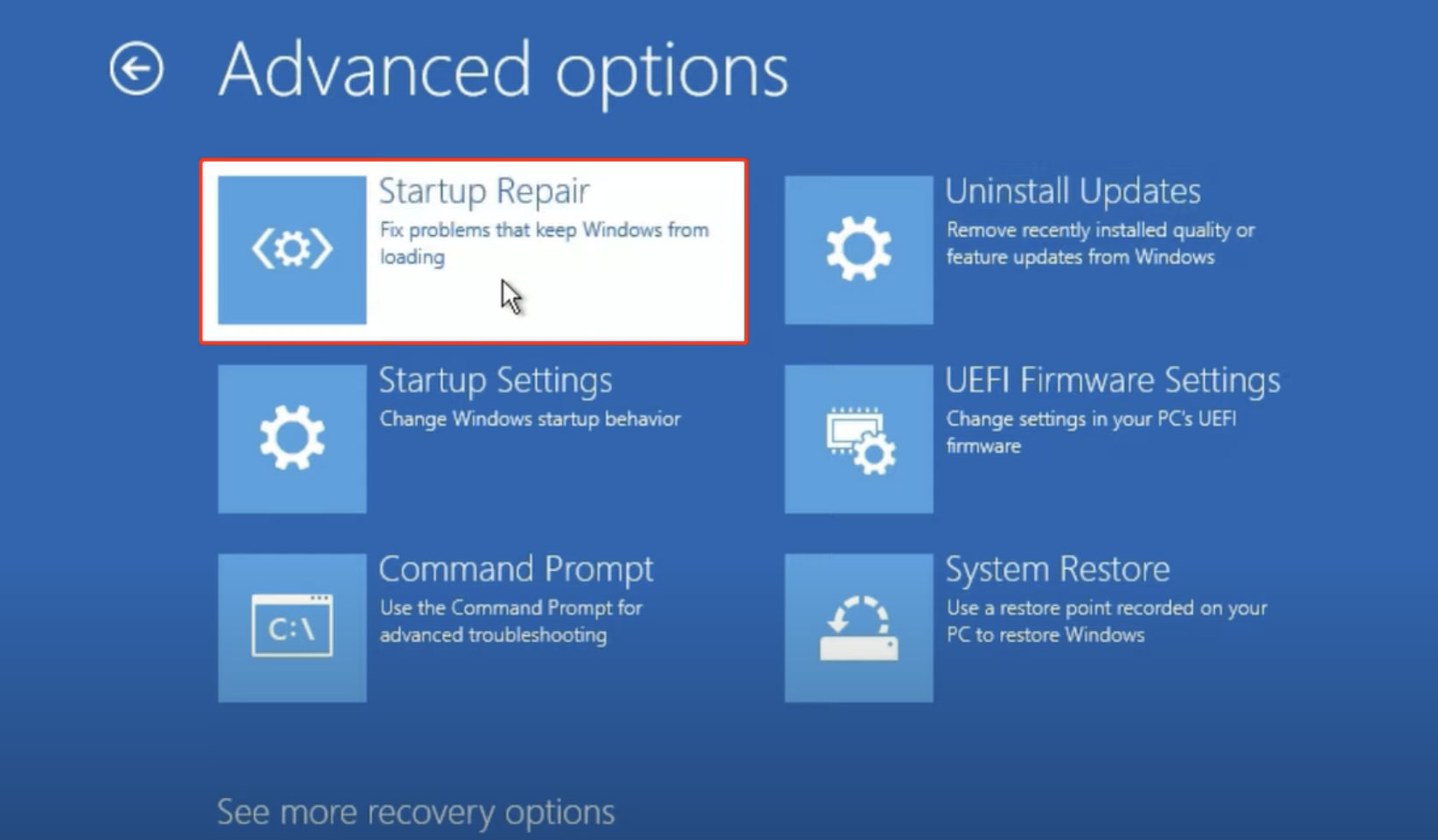
Reinstall or Downgrade your Windows OS
In the Microsoft Support Community, we find some users seeking solutions to problems such as ‘the file or directory is corrupted and unreadable Windows 11.’ The latest versions of Windows OS often have minor bugs and are vulnerable to attacks.
By reinstalling or downgrading the system, all hidden issues can be effectively resolved, but you may face the risk of data loss.
Read Also: Recover Lost Data on PC and Mac with Stellar
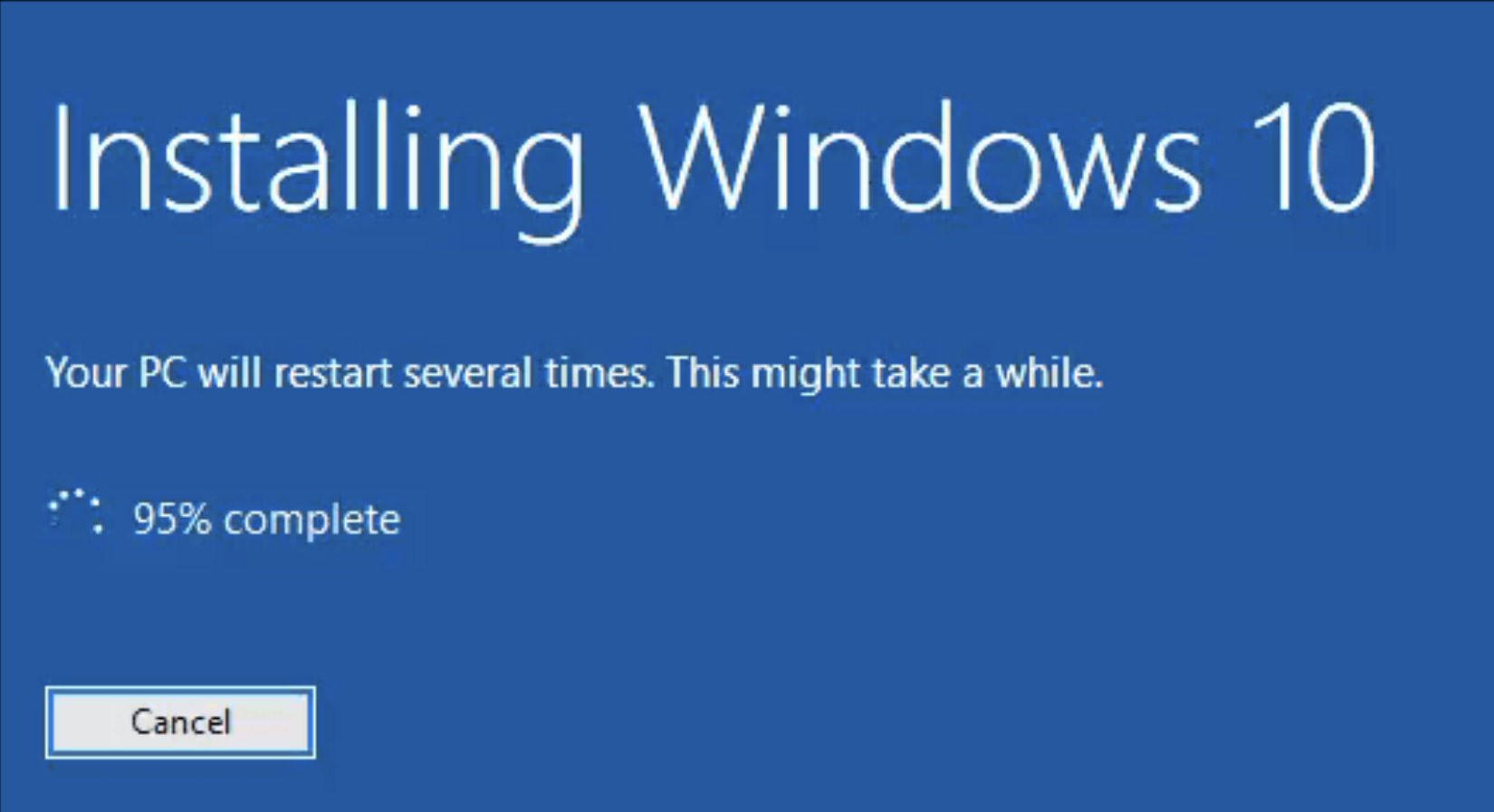
4. How to Prevent the Directory is Corrupted and Unreadable Error?
- Regular Backups: Maintain regular backups of your important files and data.
- Use Reliable Storage: Always use reliable storage devices and media. Low-quality or failing hardware can contribute to data corruption.
- Safe Removal: Always use the “Safely Remove Hardware” or “Eject” option when disconnecting external drives or devices.
- Update Software: Keep your operating system and software up-to-date. Updates often include bug fixes and improvements that can prevent such errors.
Bottom Line
With these solutions, you no longer need to worry about the error ‘the file directory is corrupted and unreadable.’ Some of these methods may put you at risk of data loss, such as reinstalling the operating system and formatting the disk. Fortunately, with 4DDiG Data Recovery, you can recover any lost files in the blink of an eye.